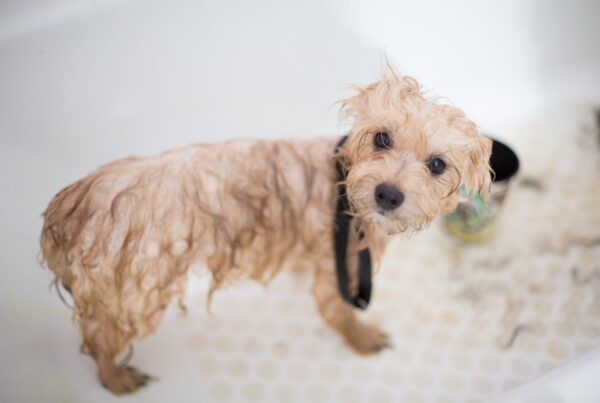Many pluses exist in favor of using homemade pet cleaning remedies. It is cost effective for one, simple to put together, and as environmentally and pet-friendly as you want it to be. For some jobs that require extra strength, you may want to use ingredients that are best kept away from your pets. But you’ll also find many non-toxic homemade pet cleaning remedies.
There are a few downsides to using homemade pet cleaning remedies but they can be worked with. Homemade supplies do not usually pack the punch that those we find in stores do, whether toxic or non-toxic. This is because you would need a laboratory to mimic some of their ingredients. But what a homemade pet cleaning remedy lacks in strength, you can make up for with elbow grease. Another downside is that homemade remedies do not retain their cleaning power as long as commercial ones. This just means mixing more often and, if you keep the ingredients on hand, this is easy to do.
The main non-toxic ingredients in homemade pet cleaning remedies include vinegar, water, baking soda and lemon juice; and the most common toxic ingredients include bleach and boric acid (neither of which is included in the recipes below). It is best to remove your pet before you clean an area whether using toxic or non-toxic homemade cleaners (and it makes the cleaning up much quicker, too). Here are six simple non-toxic homemade pet cleaning remedies that are tried and true:
1. All Purpose Cleaner –
Perhaps the simplest homemade pet cleaning remedy, this will save you lots of money since it can used on everything from the kitchen sink to the deck. Mix equal parts vinegar and water in a spray bottle. To get sticky substances off, let the mixture sit for about three minutes before wiping.
2. Disinfectant –
Put 1/2 cup of vinegar and 1/4 cup of rubbing alcohol in a spray bottle. After your pet is removed from his eating, sleeping or eliminating area, spray judiciously. Both the alcohol and vinegar act as disinfectants and, because the alcohol evaporates very quickly, it is a non-toxic cleaner.
3. Bathroom Cleaner –
Baking soda has many uses. In cleaning, it can replace the sometimes toxic commercial abrasives such as Ajax. Sprinkle baking soda on the tub and, using a good wet sponge with some abrasion to it, scrub away. Use it also in the toilet and sink. Add a touch of vinegar and you’ll be disinfecting, too.
4. Clothes and Furniture –
If your coworkers think you own a mink coat because of all the pet hair on your jacket, it’s time to pull out the homemade pet hair remover remedy! As any good Yankee knows, life is impossible without duct tape. Roll a piece of duct tape around your hand, sticky side out and manhandle yourself before you head out the door. You can also use long strips of duct tape on the furniture. Or you can run a damp towel over clothing and furniture to get up hair. Another thing to keep in mind – fabric made of natural fibers is less prone to static cling which means less pet hair on it.
5. Carpet –
This is where it’s toughest to get out a pet urine smell or just that doggy odor because it seeps into not only the fibers but the padding as well. Begin by dabbing the area of the stain with a mild, non-toxic dish detergent, such as Mrs. Meyers. After dabbing, put a solution of one part vinegar and two parts water is a spray bottle and spray lightly. Repeat and, if your knees begin to get bruised from all that dabbing, sprinkle the rug with baking soda, vacuum and go get yourself an ice cream.
6. Laundry –
Whether washing dog slobber from delicates or some unidentifiable substance from dog blankets, you can use your own powerful laundry detergent. Simply mix one cup grated Fels Naptha soap, 1/2 cup of borax and 1/2 cup washing soda. All of these items should be available in the laundry detergent section of your store. Use between one and two tablespoons. This is a non-toxic mixture.
These six simple homemade pet cleaning remedies are easy to make, non-toxic and effective on many stains. For really tough stains, you may want to graduate up to using bleach, keeping in mind that bleach does change a substance’s color so it must be used carefully. For everyday cleaning, you’ll find these remedies are very successful. And don’t worry about your house smelling like vinegar – the smell dissipates when it dries.
This article was modified from dogster.com



